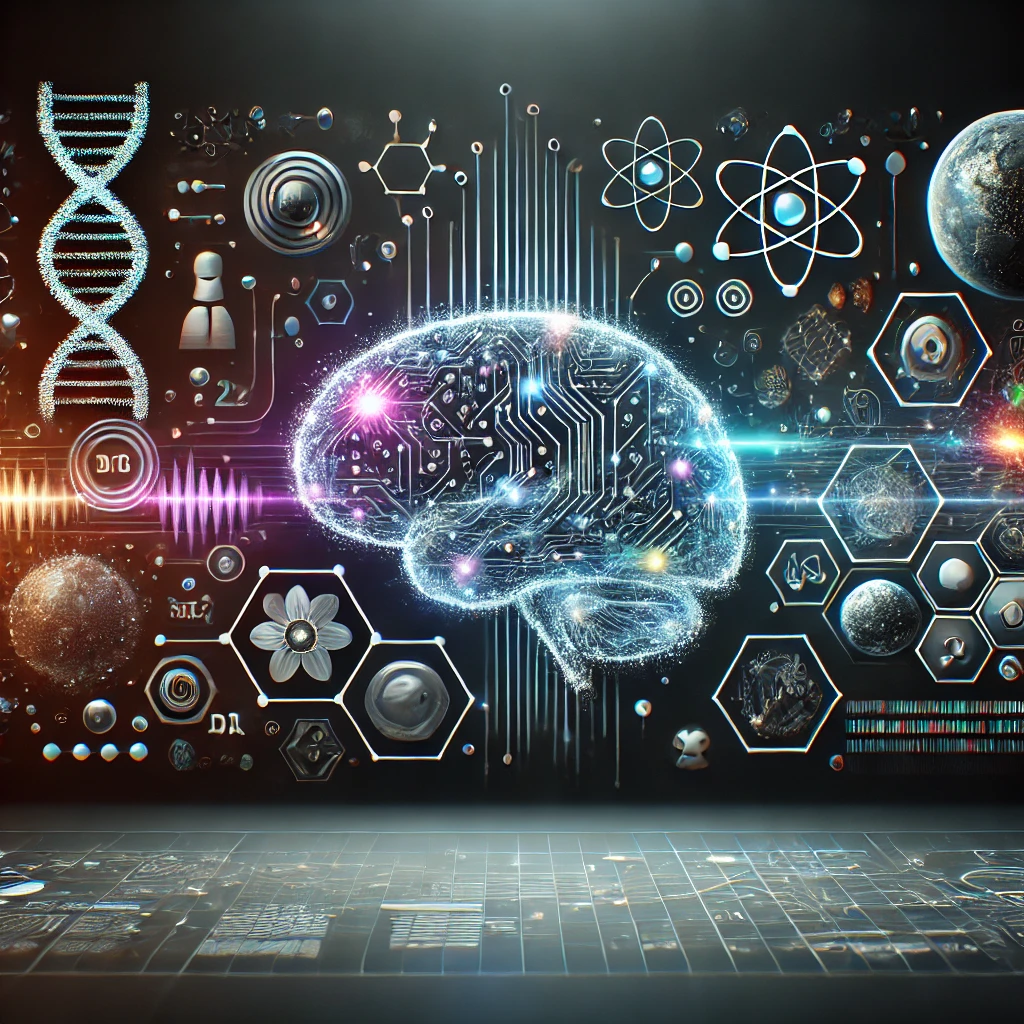Using AI in Science 2025: Revolutionizing Discovery and Innovation
Artificial Intelligence (AI) continues to revolutionize industries across the globe, and science is no exception. As we move into 2025, the integration of AI into scientific research is more profound than ever. From accelerating data analysis to uncovering new discoveries, AI is reshaping the way scientists approach complex problems. In this blog post, we’ll explore the transformative impact of AI in science, its applications in various disciplines, and the future possibilities it holds.
Table of Contents
- Introduction to AI in Science
- Key Applications of AI in Scientific Research
- AI in Biology and Medicine
- AI in Physics and Astronomy
- AI in Environmental Science
- Benefits of Using AI in Science
- Challenges and Ethical Considerations
- Future Trends: AI in Science by 2030
- Conclusion
1. Introduction to AI in Science
AI’s ability to process vast amounts of data and identify patterns has made it a valuable tool in scientific research. In 2025, scientists are leveraging AI to tackle challenges that were previously insurmountable. With advancements in machine learning (ML), natural language processing (NLP), and neural networks, AI is now capable of assisting in hypothesis generation, experimental design, and data interpretation.
Did You Know? AI-powered systems can analyze millions of research papers in seconds, helping scientists stay updated and discover connections across disciplines.
2. Key Applications of AI in Scientific Research
AI in Biology and Medicine
In 2025, AI is driving innovation in biology and medicine:
- Drug Discovery: AI algorithms are being used to identify potential drug candidates faster and more cost-effectively. Companies like DeepMind’s AlphaFold have revolutionized protein structure prediction, enabling breakthroughs in drug design.
- Genomics: AI helps analyze genetic data to identify disease markers and predict genetic disorders.
- Medical Imaging: AI-powered tools improve the accuracy of diagnosing conditions like cancer through enhanced analysis of medical scans.
AI in Physics and Astronomy
The vastness of the universe presents challenges in data analysis that AI is uniquely equipped to handle:
- Cosmology: AI is used to map dark matter distributions and analyze cosmic microwave background radiation.
- Exoplanet Detection: Machine learning models process data from telescopes to identify new planets in distant star systems.
- Particle Physics: AI assists in analyzing data from particle accelerators, leading to new discoveries about fundamental particles.
AI in Environmental Science
AI’s role in addressing environmental challenges is more critical than ever:
- Climate Modeling: AI enhances the accuracy of climate predictions by analyzing historical and real-time data.
- Biodiversity Monitoring: AI-powered drones and sensors help track wildlife populations and identify endangered species.
- Sustainable Solutions: AI optimizes renewable energy systems and improves resource management strategies.
3. Benefits of Using AI in Science
Speed and Efficiency
AI significantly reduces the time required for data analysis, enabling scientists to focus on critical aspects of research.
Enhanced Accuracy
AI’s ability to detect patterns and anomalies improves the precision of experiments and predictions.
Interdisciplinary Collaboration
AI bridges gaps between disciplines, fostering collaboration and innovation across scientific fields.
Cost Reduction
Automating repetitive tasks and optimizing resource usage can lower the cost of scientific research.
4. Challenges and Ethical Considerations
While AI offers immense potential, it also comes with challenges:
Data Bias
AI systems can inherit biases present in training data, leading to skewed results.
Ethical Concerns
The use of AI in sensitive areas, such as genetic research, raises ethical questions about privacy and consent.
Dependence on Technology
Over-reliance on AI could lead to a lack of critical thinking and problem-solving skills among researchers.
Access and Inequality
Not all institutions have equal access to AI tools, potentially widening the gap between well-funded and under-resourced researchers.
5. Future Trends: AI in Science by 2030
As AI continues to evolve, its impact on science will deepen:
Automated Laboratories
By 2030, we may see fully automated labs where AI designs, conducts, and analyzes experiments with minimal human intervention.
AI-Driven Collaboration
AI platforms could facilitate global collaboration by connecting researchers and sharing real-time insights.
Quantum Computing Integration
The combination of AI and quantum computing could unlock solutions to problems that are currently unsolvable.
Personalized Medicine
Advances in AI will enable highly personalized treatments tailored to individual genetic profiles and health histories.
6. Conclusion
The use of AI in science in 2025 is a testament to how technology can drive progress and innovation. From understanding the complexities of the human genome to unraveling the mysteries of the cosmos, AI is enabling discoveries that were once the realm of imagination. However, as we embrace these advancements, it is crucial to address the ethical and practical challenges to ensure equitable and responsible use of AI in science.
The journey of AI in science is just beginning. As we look to the future, the potential of AI to revolutionize scientific research is boundless. The key lies in harnessing its power responsibly to benefit humanity as a whole.
Keywords: AI in science, artificial intelligence in research, AI applications 2025, machine learning in science, AI and medicine, AI challenges, future of AI
Meta Description: Discover how AI is revolutionizing science in 2025, from biology and medicine to environmental science. Explore its applications, benefits, challenges, and future trends.

